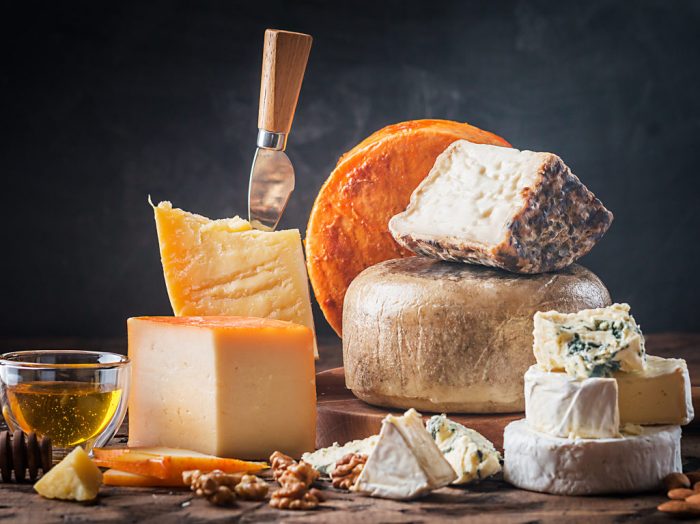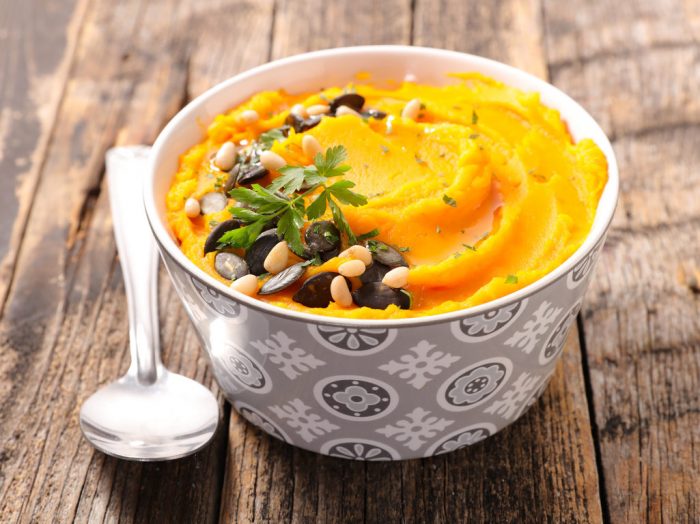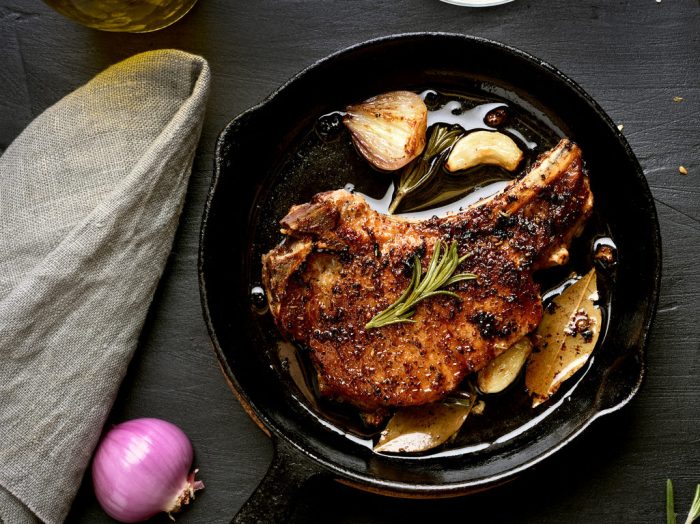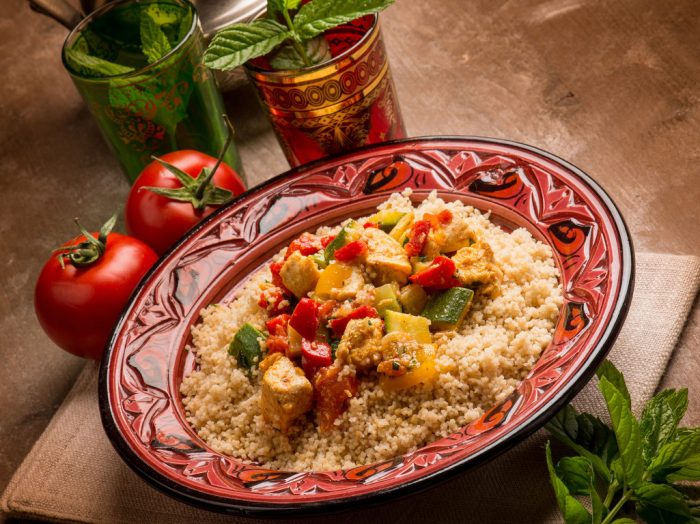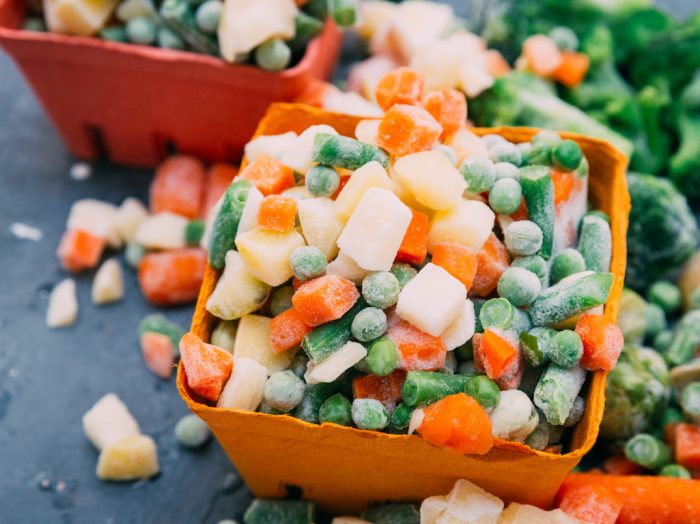We think it’s time to talk about good cheese versus bad cheese. Is there really such a thing? Well, if you think about the fat content of your cheese and how it relates to your health or your weight, asking this question might be justified. Choose what you need at the moment, but don’t always deprive yourself of fat cheeses!
I adore cheese, and I can’t live without it. I always say that I could give up on meat anytime, but I can’t eliminate cheese from my diet. But at one point when I had gained weight, I became more aware of what I ate. Then, I eliminated bread, sweets, rice, and potatoes for a while, and I became also more careful when choosing cheese.
I know cheese has a bad reputation as a high-fat food that leads to gaining weight, but I can’t stop eating it. Instead, I learned the differences between good cheese versus bad cheese. This obviously doesn’t mean I’ll never eat ‘bad cheese’, but that I cut it from my diet only until I lose those extra kilos. When I’m on a diet, I eat good cheeses, meaning low-fat ones.
But what does it mean when we talk about good cheese versus bad cheese? Well, because one of the primary concerns about cheese is its high-fat content, let’s explore that. Making smart cheese choices means you can still eat cheese, but only choose different types of it, depending on your current goals.
Want a healthy diet? Reduce your fat cheese intake. Want to spoil yourself? Eat even the bad cheeses, but pay attention to your serving size! After all, moderation is the key.
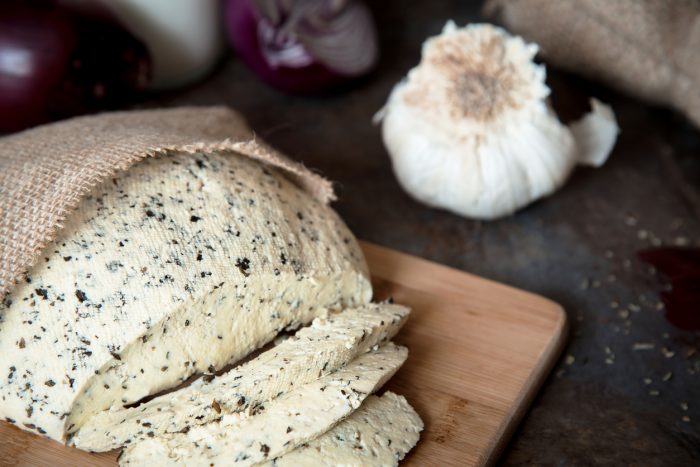
Good Cheese versus Bad Cheese. How to choose your cheese
The Good
1. Cottage cheese
Cottage cheese is a curd-based fresh cheese that naturally contains less fat than other cheeses. Standard cottage cheese contains 6 percent fat. You can also buy low-fat versions which contain 2 percent fat. You can eat it as is, with fruits and vegetables or as a filling for potatoes or zucchini. If you want, you can flavor it with herbs.
2. Ricotta
This is an Italian curd cheese made from the whey left over from the production of other cheeses. Compared to most cheeses, ricotta is a healthier choice because it contains less salt and fat. It only has 10 percent fat; it’s light and creamy with a slightly grainy texture. Its flavor is delicate, so you can eat it on its own or use it in sweet and savory dishes: to top your pizza instead of the classic mozzarella, or added into warm pasta for a delicious, creamy and healthy dish, or spread on some bruschetta. You can mix it with berries and a drizzle of honey to serve it as a dessert.
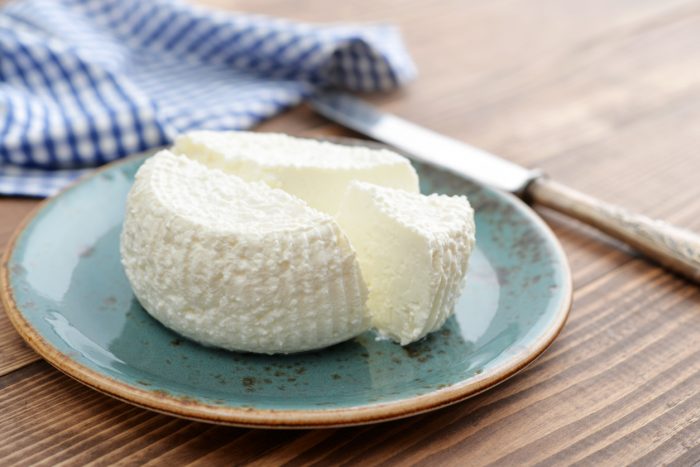
3. Reduced-fat Cheddar
Cheddar is a British cheese, but now it’s one of the most popular types of cheese and it’s made everywhere in the world. There are many types of Cheddar, and their flavor depends on the period of aging and their origin. The reduced-fat version isn’t really low in fat or salt, but on average, it contains 22 percent fat compared to standard Cheddar which has about 35 percent fat.
Reduced-fat Cheddar cheese is a good swap for standard cheddar. Use it in sandwiches, grate it and sprinkle it over a casserole dish, as an appetizer, or in a delicious apple pie for dessert. Cheddar is the ultimate versatile cheese.
4. Mozzarella
Mozzarella is an Italian semi-soft cheese traditionally made from buffalo milk. Now, mozzarella is often made from cow’s milk. It has an elastic texture, and because of its stretchiness, it melts well. It’s the classic pizza topping cheese.
Normally, fresh mozzarella contains about 18 percent fat. Low moisture mozzarella has around 21 percent fat. Reduced-fat versions typically have 10 percent fat, so they’re your best option if you are on a diet. Use it on pizza or in salads, with fresh veggies such as tomatoes.
5. Feta
When you think about good cheese versus bad cheese, where do you place feta cheese? The answer is kind of surprising because its rich taste and creamy texture might make you think it’s full of fat. But this cheese made from sheep’s milk, or from a mixture of sheep and goat’s milk, is lower in fat than many types of cheese: around 20 percent fat. Still, it’s high in sodium, so avoid adding additional salt when cooking with feta.
Use it in salads, with summer vegetables such as tomatoes, cucumbers, eggplant, and zucchini. You can also crush some feta over a flatbread and drizzle some olive oil on it.
The Bad
1. Camembert
Camembert is a soft and creamy cheese made of cow’s milk. Its flavor is strong, and in some cases, pungent, depending on the type of Camembert and its age. Speaking of fat, Camembert contains less fat than some other cheeses: around 23 percent. But its sodium level is quite high, so eat it in moderation because if you have health issues it can be a bad cheese for you. The healthiest way to eat camembert is in salads, but you can also melt it and eat it with dippers, or add it to mac and cheese. Don’t deep fry it, because it will bring extra fat on your plate!
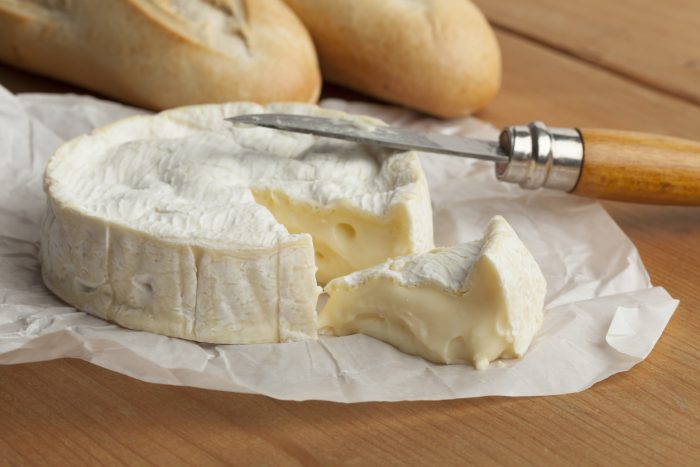
2. Brie
Brie and Camembert look similar, are both made of cow’s milk, and they are often served in similar ways. Only brie has a higher fat content: about 29 percent. It can be a bad cheese unless you look out for ‘lighter’ versions of brie.
3. Danish Blue
Danish Blue is a strong flavored semi-soft cheese with dark blue veins and a salty taste. Usually, it has 29 percent fat. It’s also fat and salty, so eat it sparingly on salads, on four cheese pizza, or as a dessert cheese with fruit.
4. Parmesan
Who doesn’t love parmesan? This very hard Italian cheese has a long tradition. If you’re concerned about fat, don’t think too much about where to place it in the good cheese versus bad cheese debate. Because it’s quite clear. Parmesan is high in salt and it’s also high in fat: about 30 percent fat, of which 19 percent is saturated fat.
The good news about parmesan is that its strong flavor means you don’t need to use much of it. So, if you can’t completely replace this tasty cheese, just sprinkle a little of it on your pasta dishes, or add some in your cheese sauce.
5. Mascarpone
Who would ever think that mascarpone is a fat cheese? Well, not me! Not when I used it in large amounts in tiramisu! I can’t say that was a mistake, but I know for sure that I’ll avoid it the next time I’m on a diet.
Mascarpone is not the best choice for your heart health as it’s one of the highest fat cheeses: 44 percent! A healthier option is cream cheese, which has 34 percent fat. Or, if you want to make a healthier tiramisu, try substituting half the mascarpone in recipes with low-fat Greek yogurt. There is no reduced-fat mascarpone on the market.
You can also find out Which Are the Best Cheeses for Grilling.

